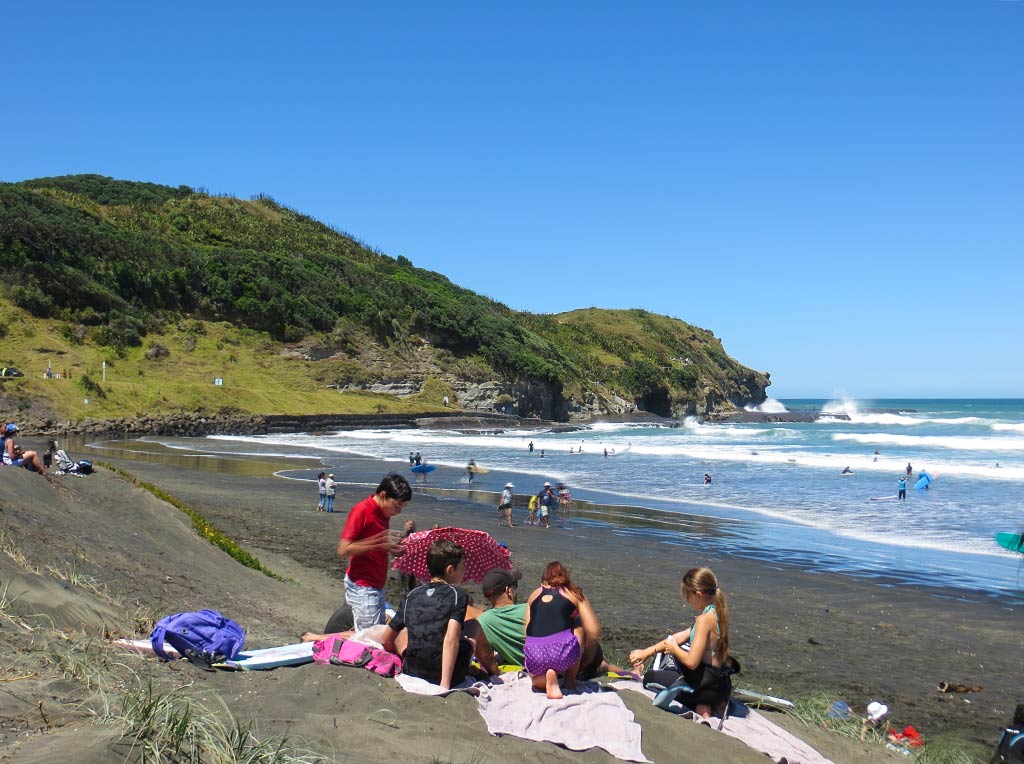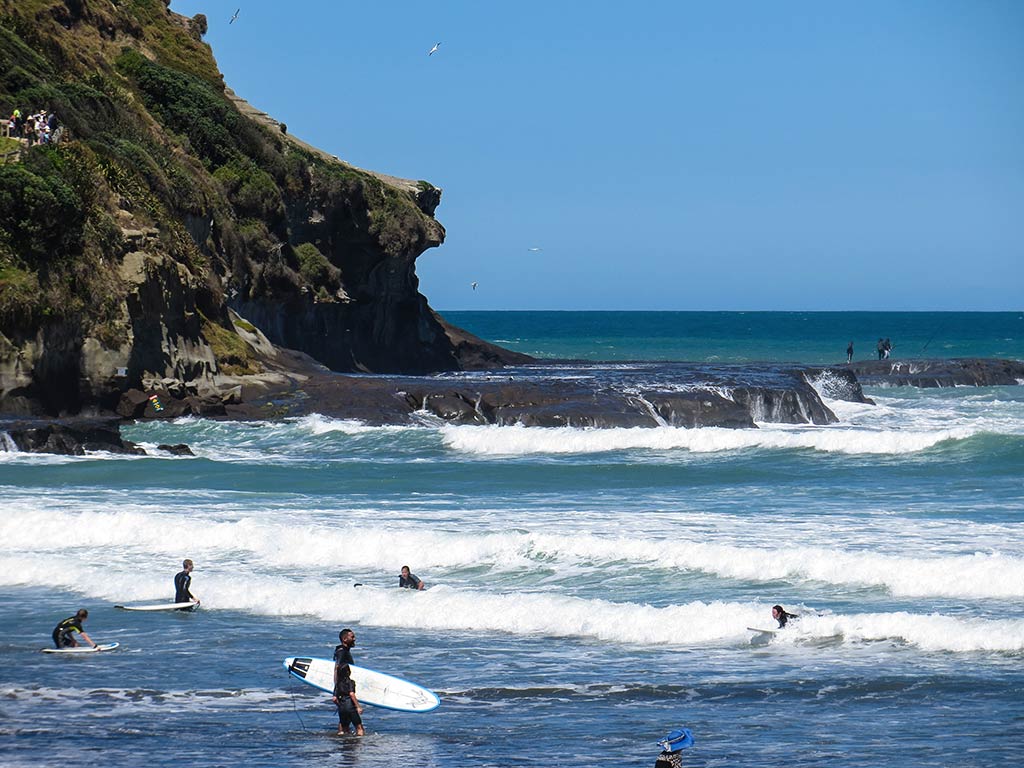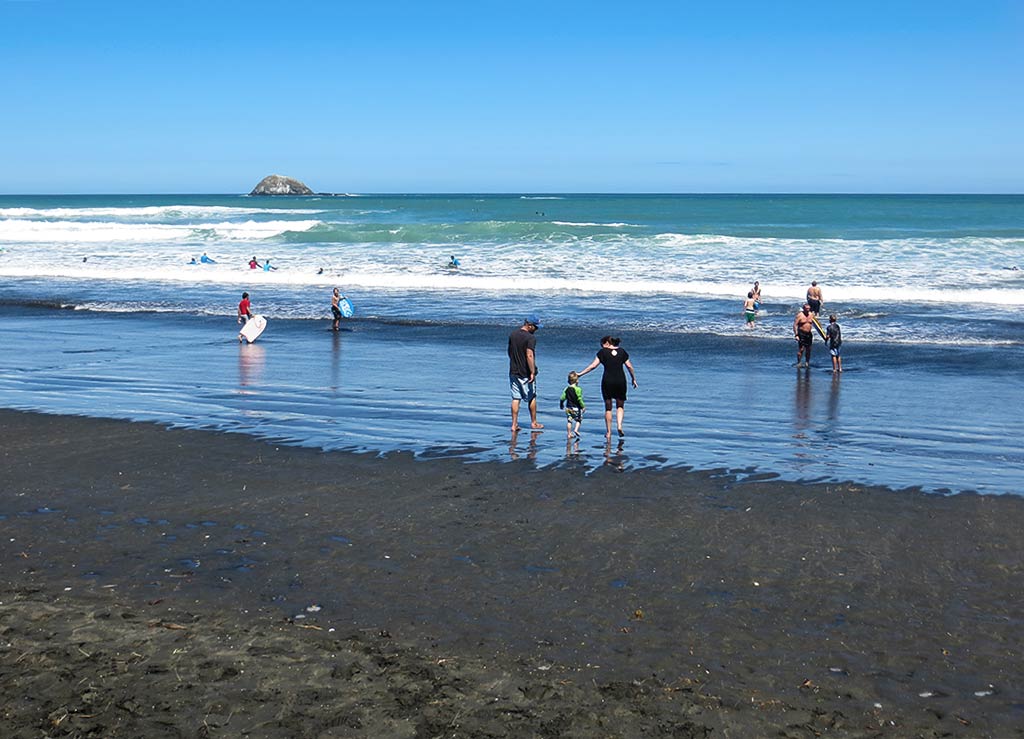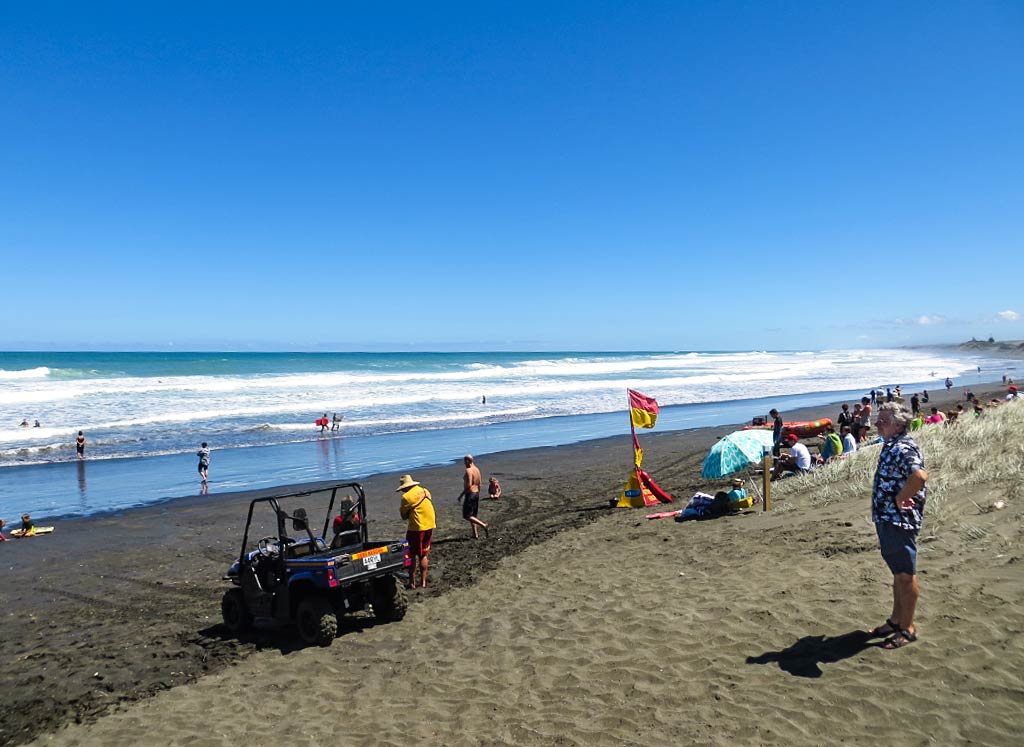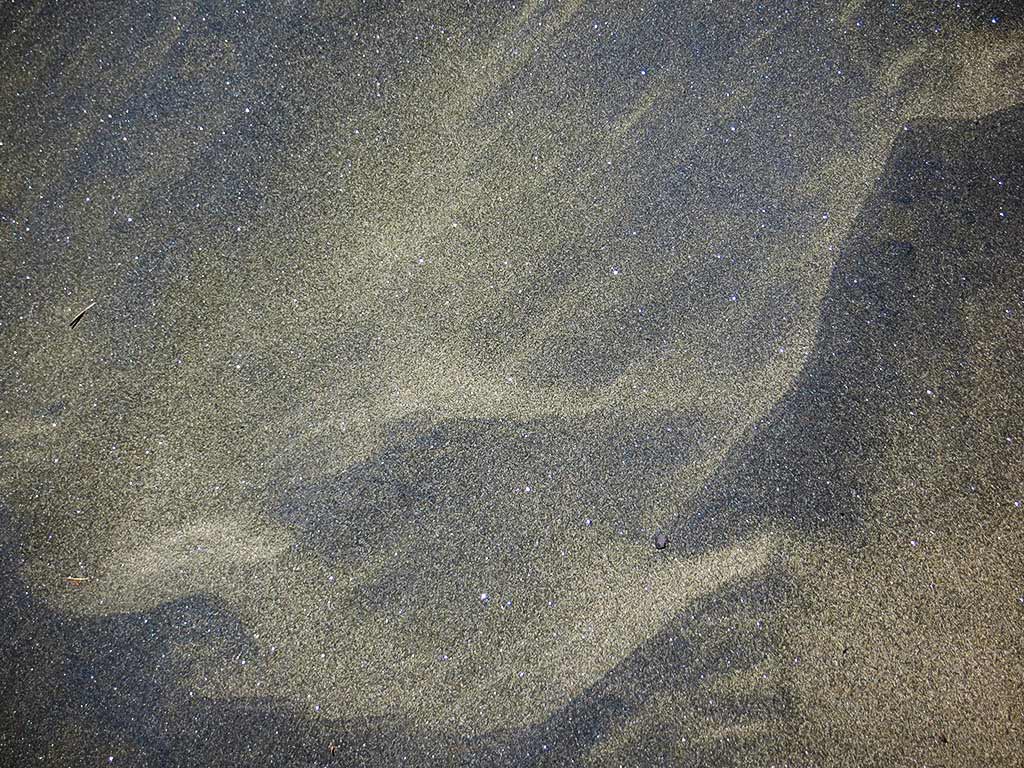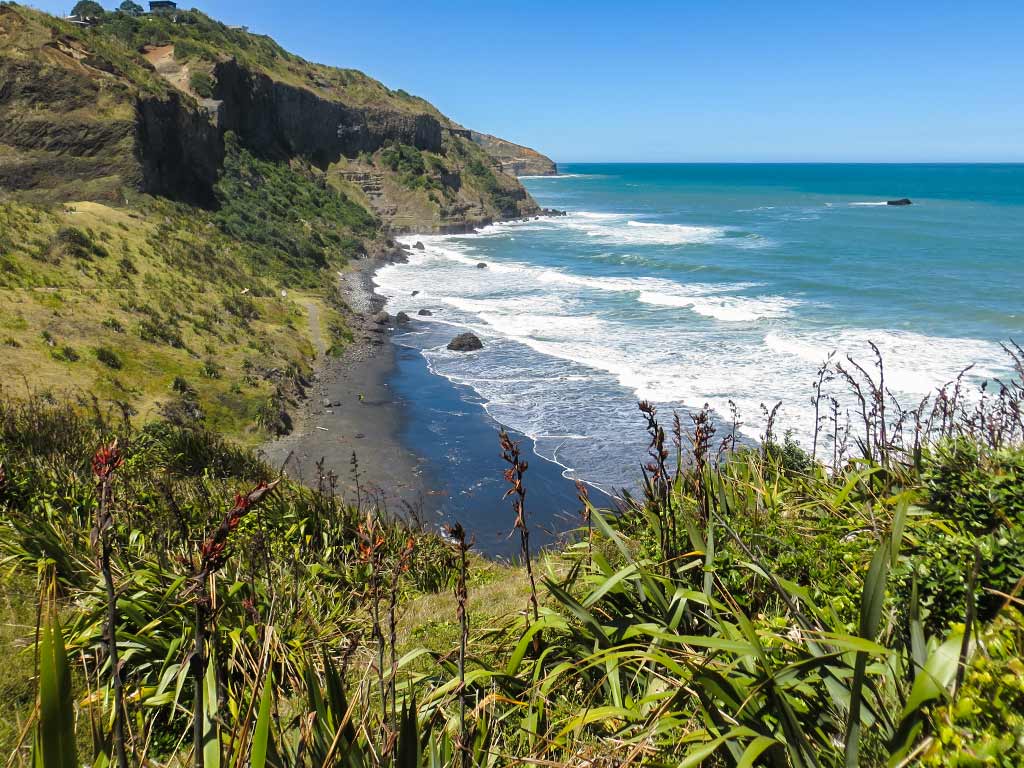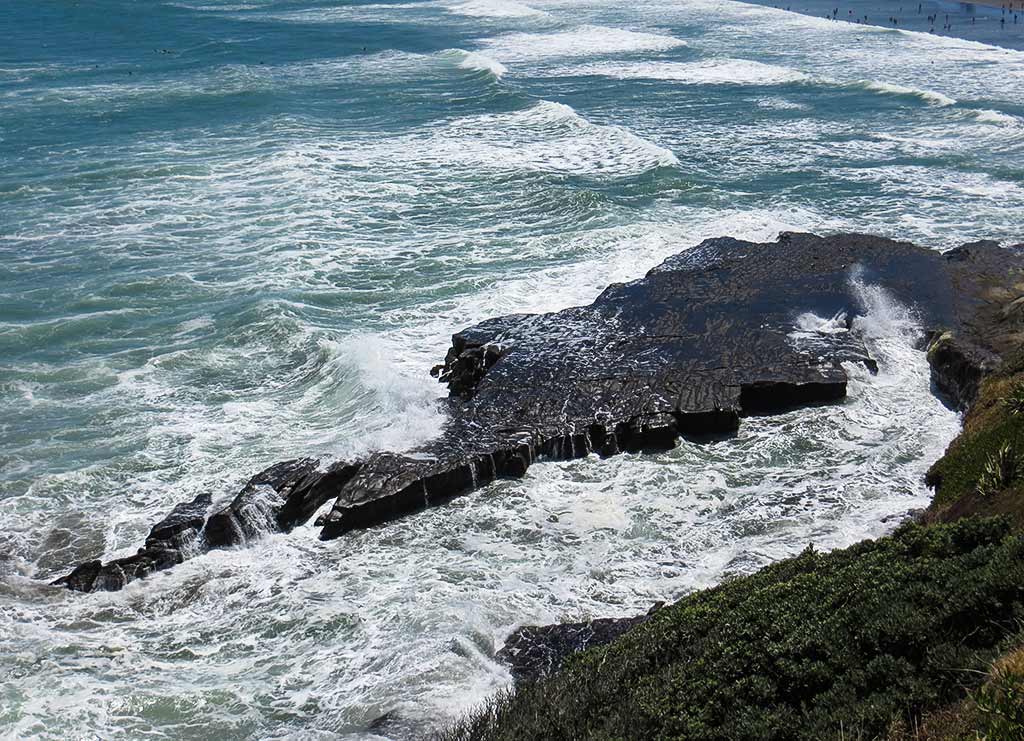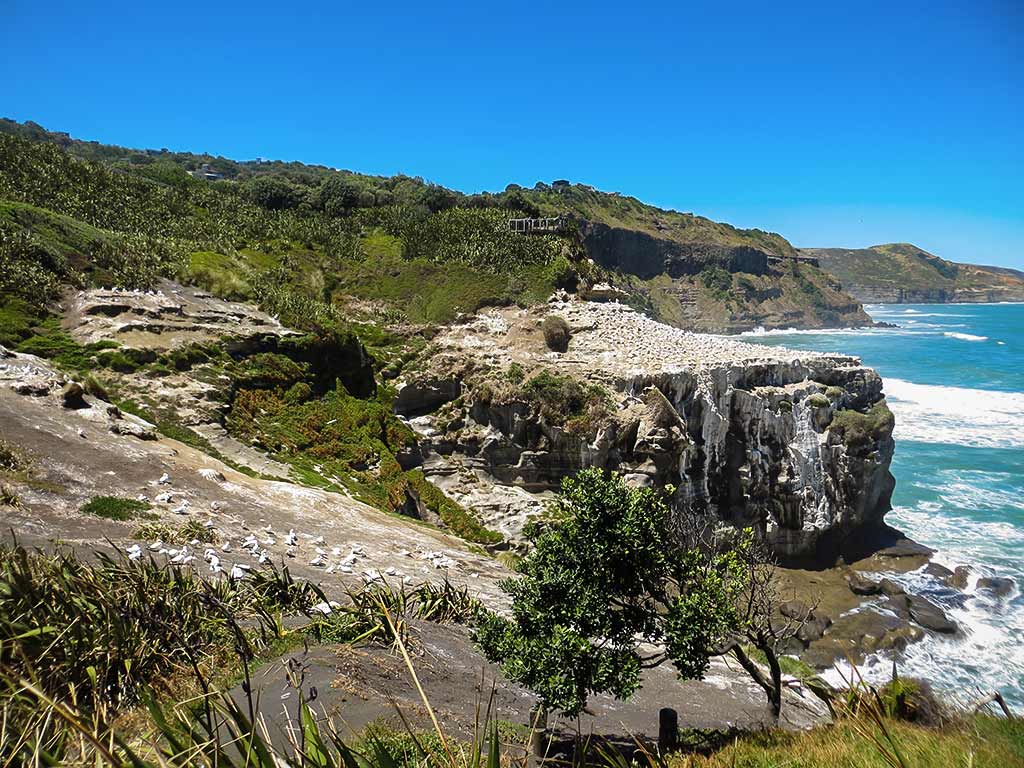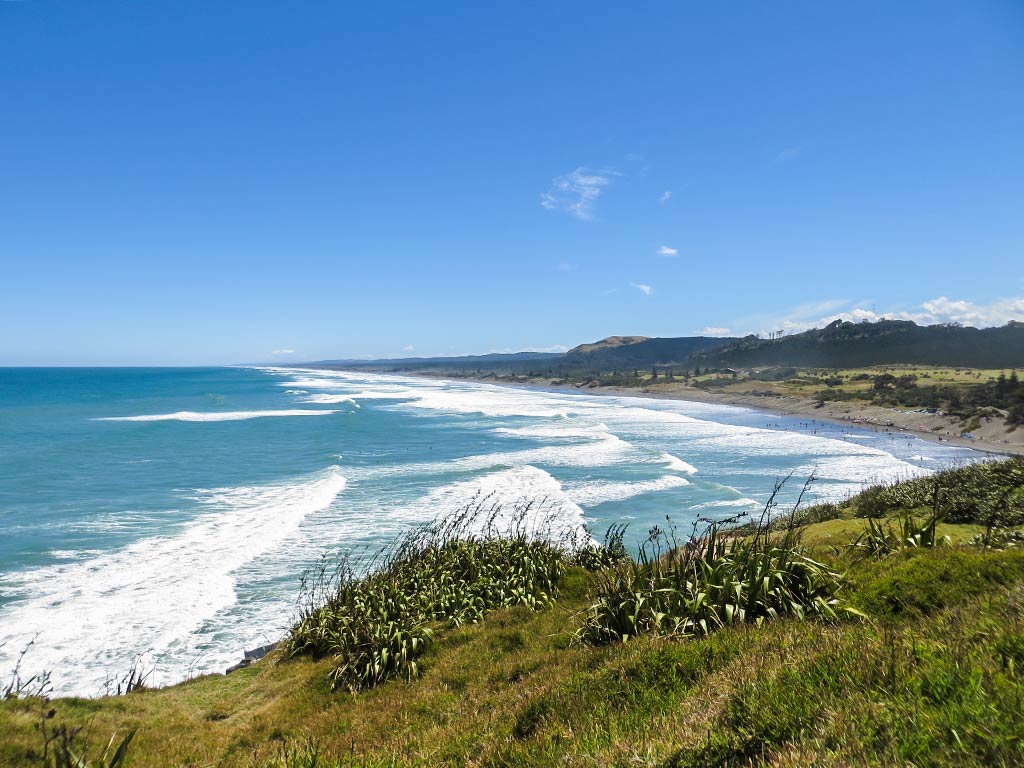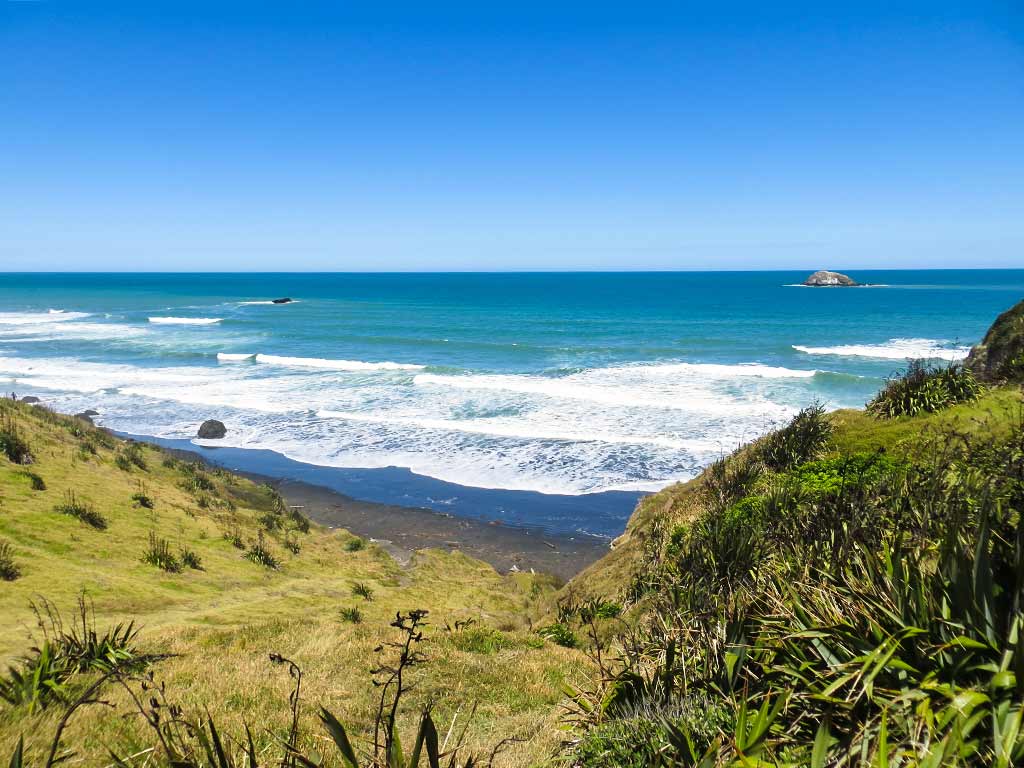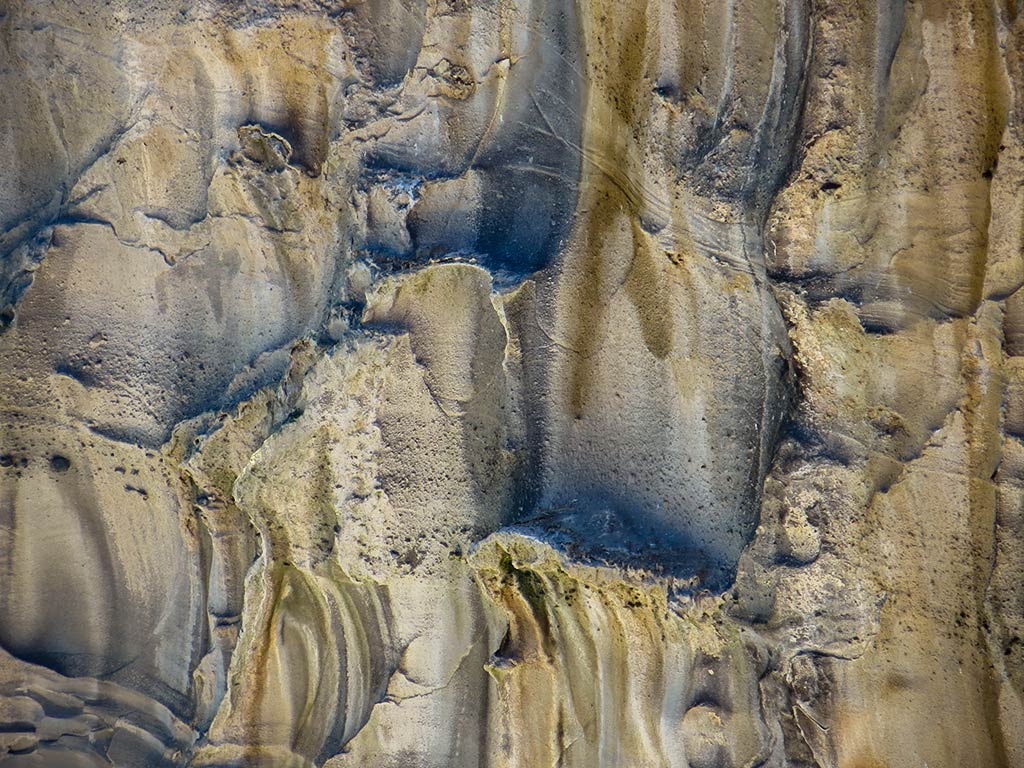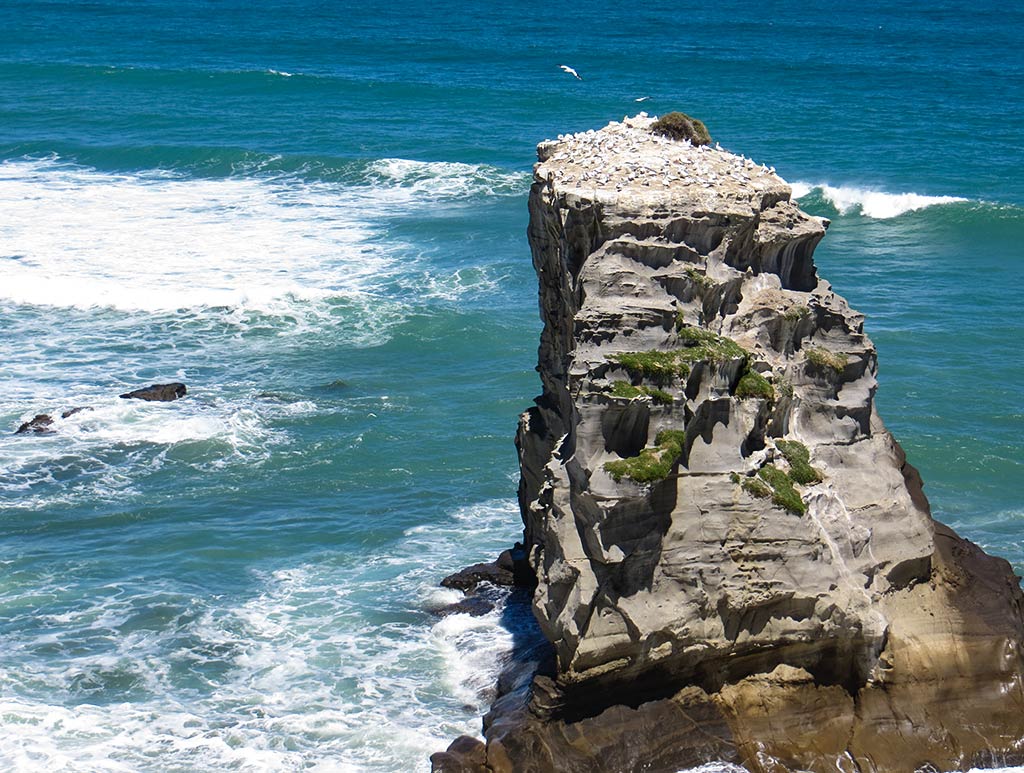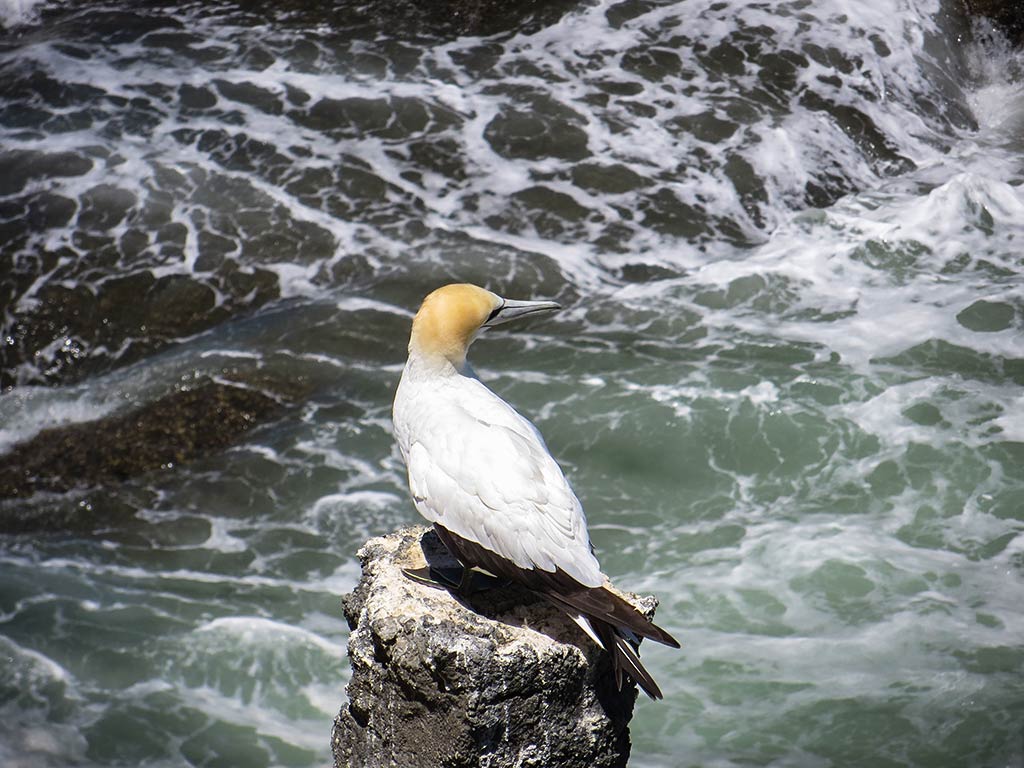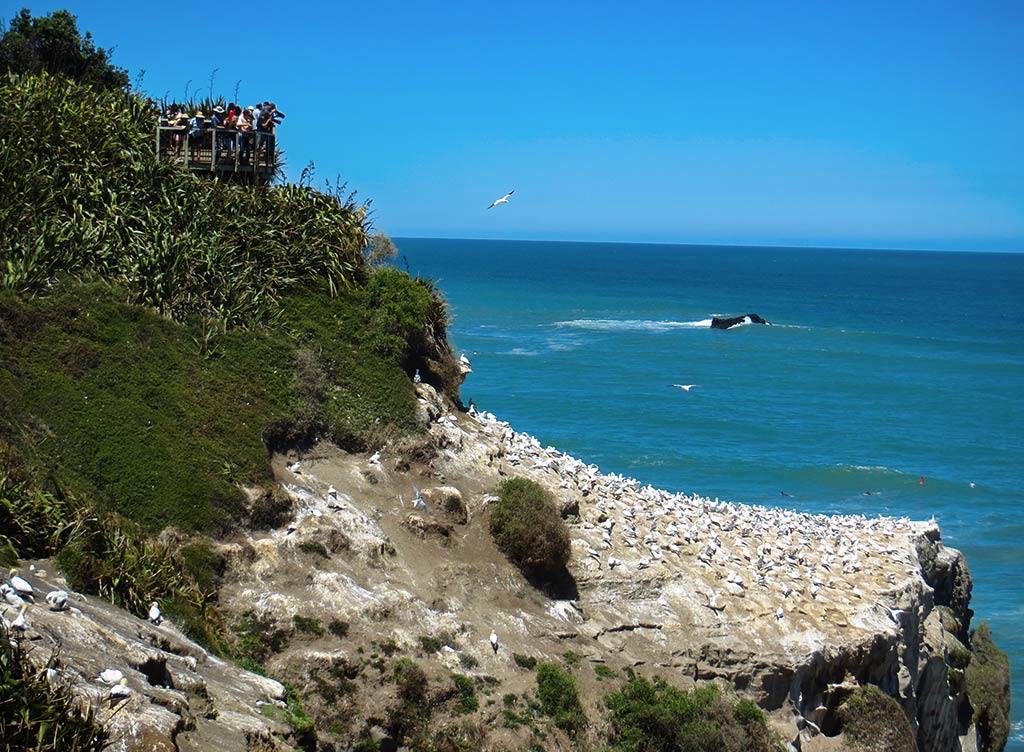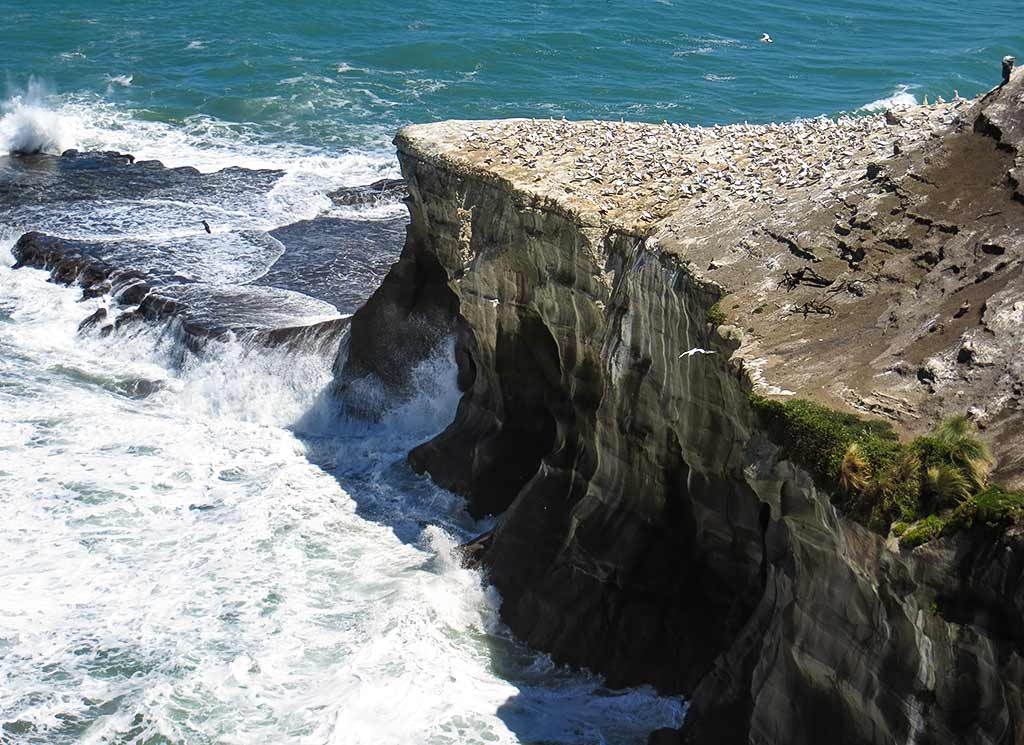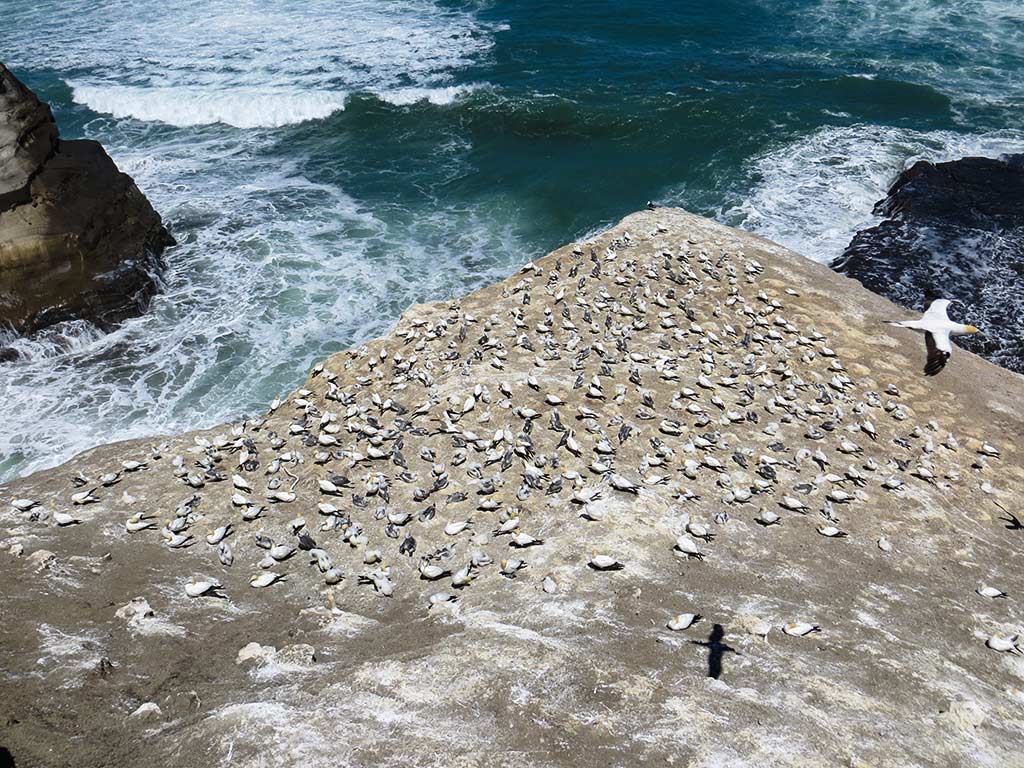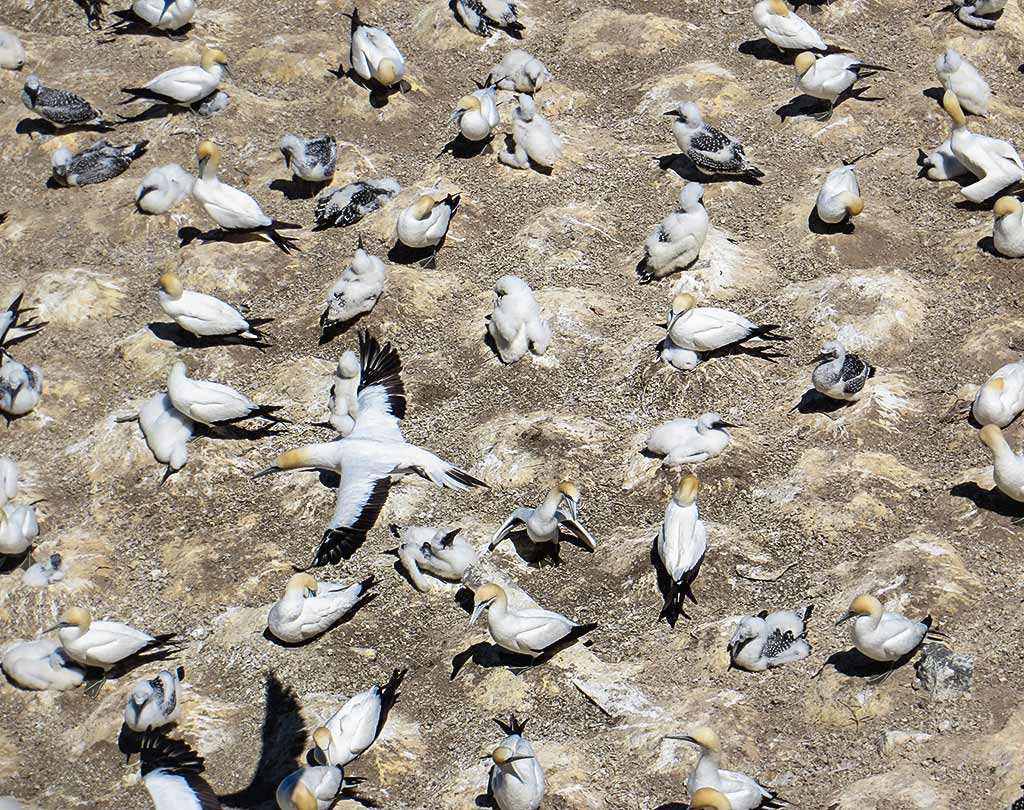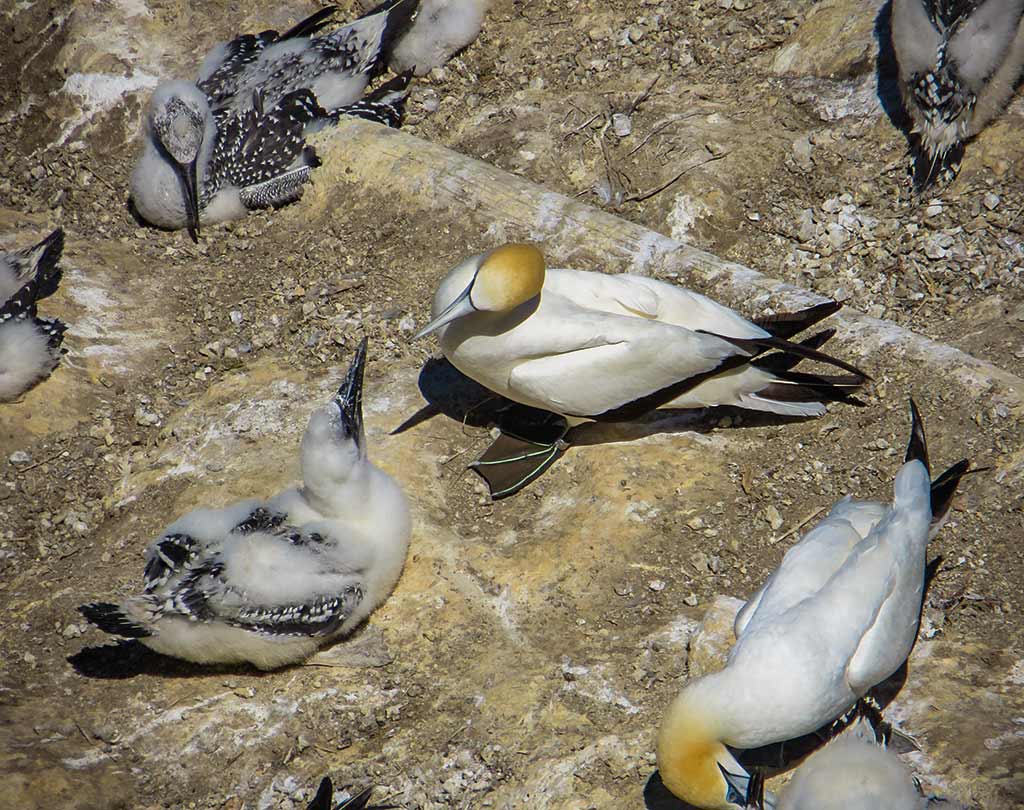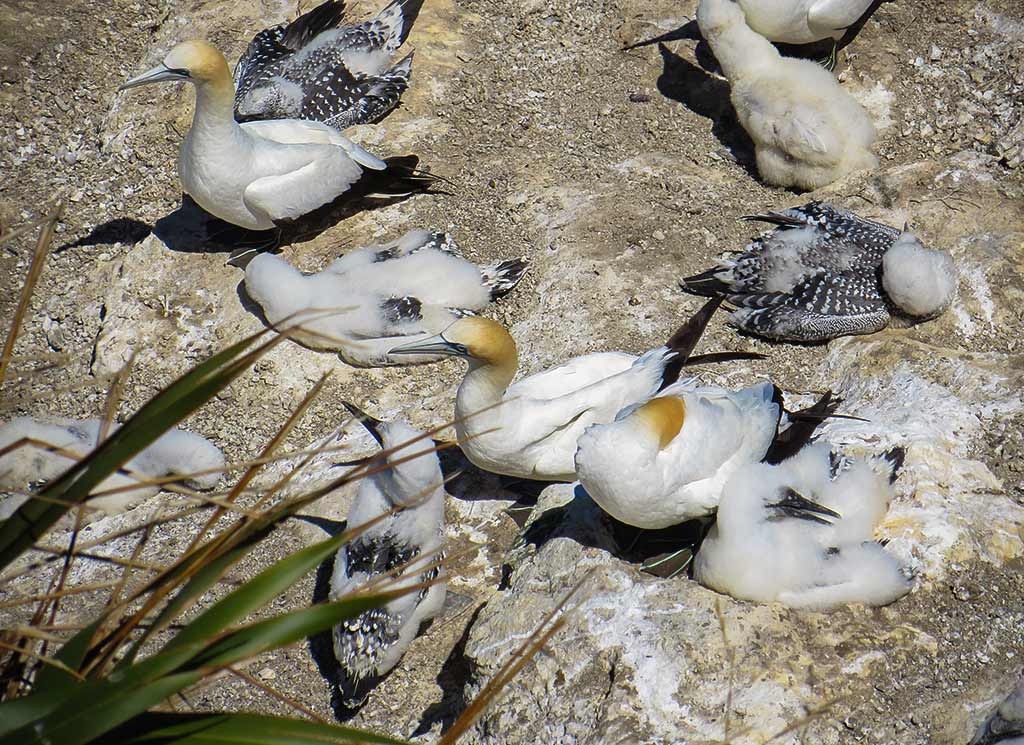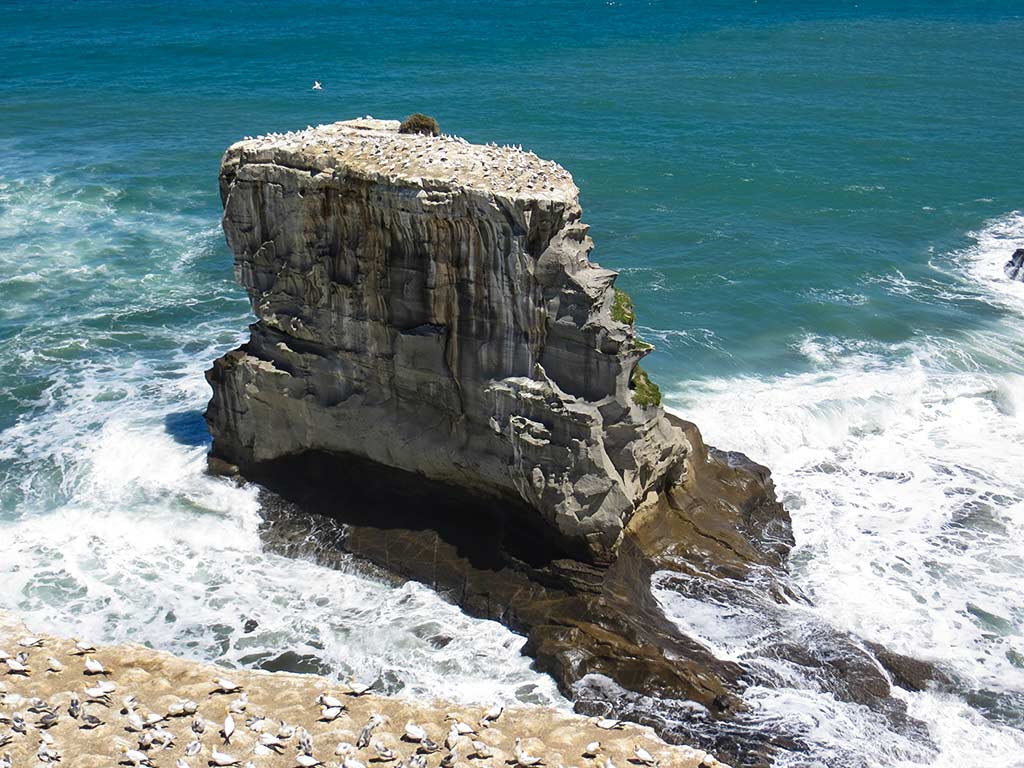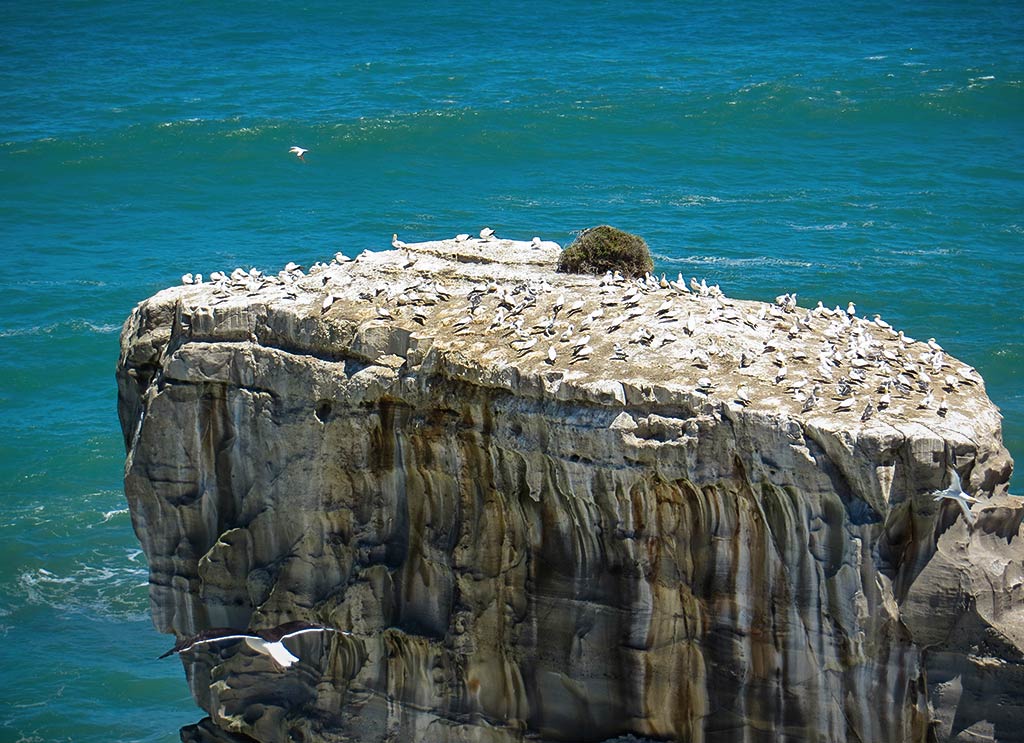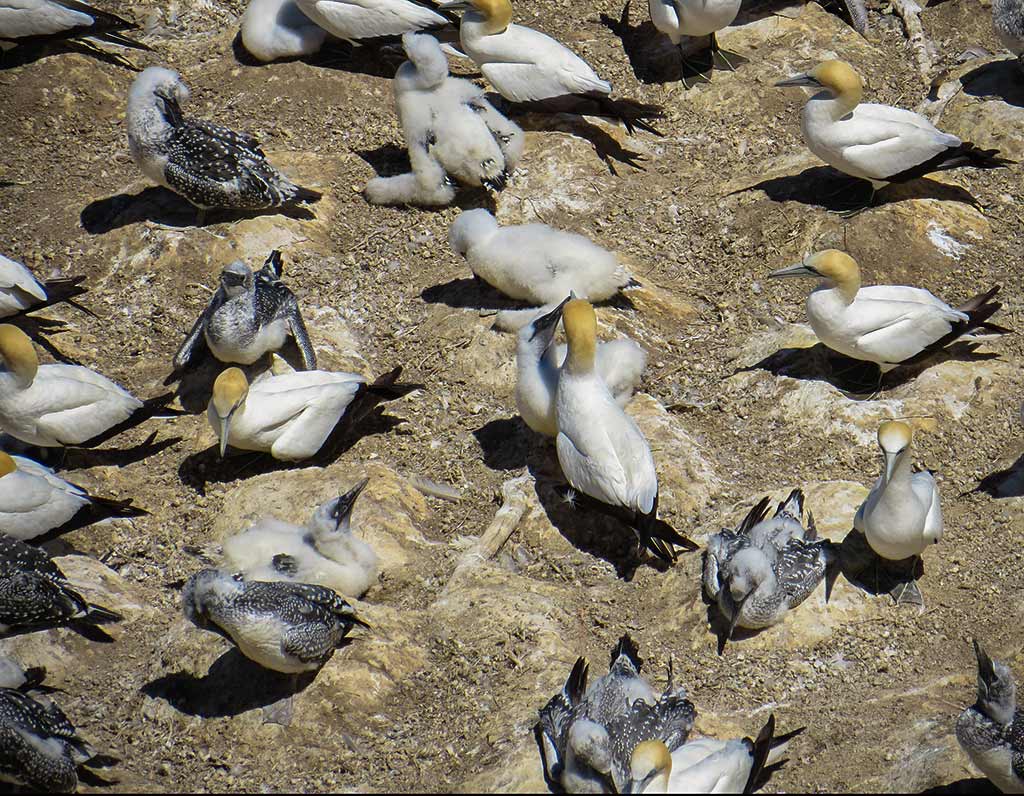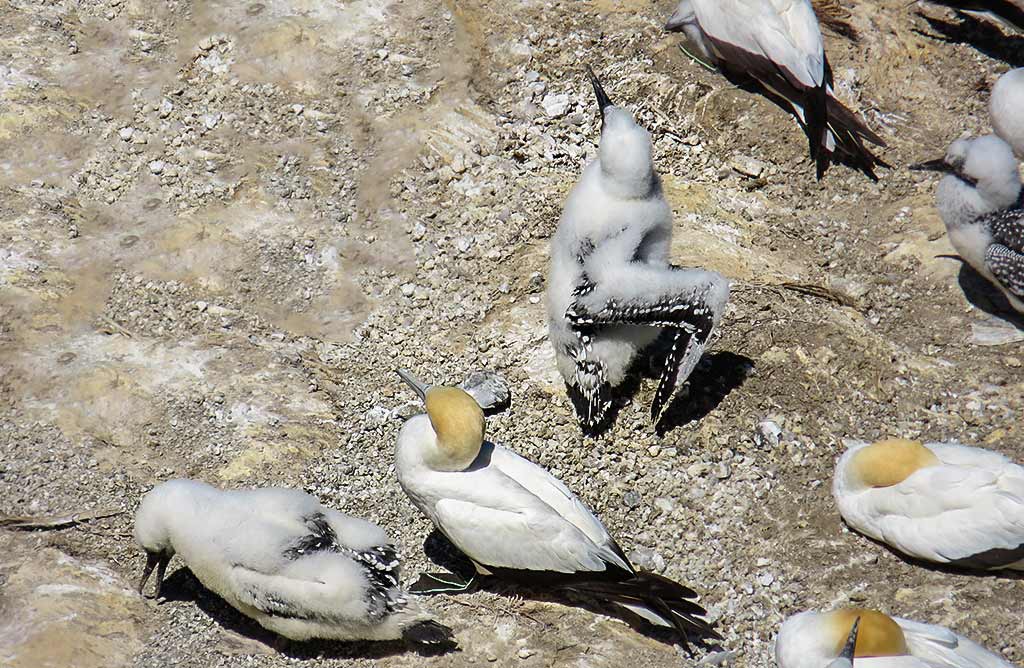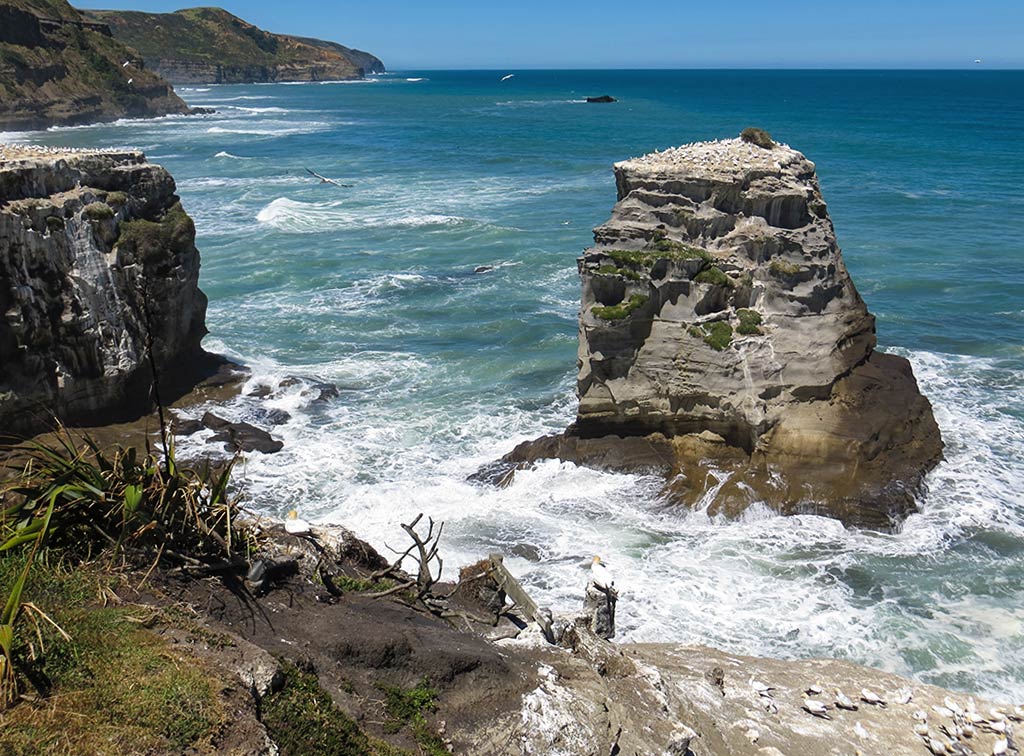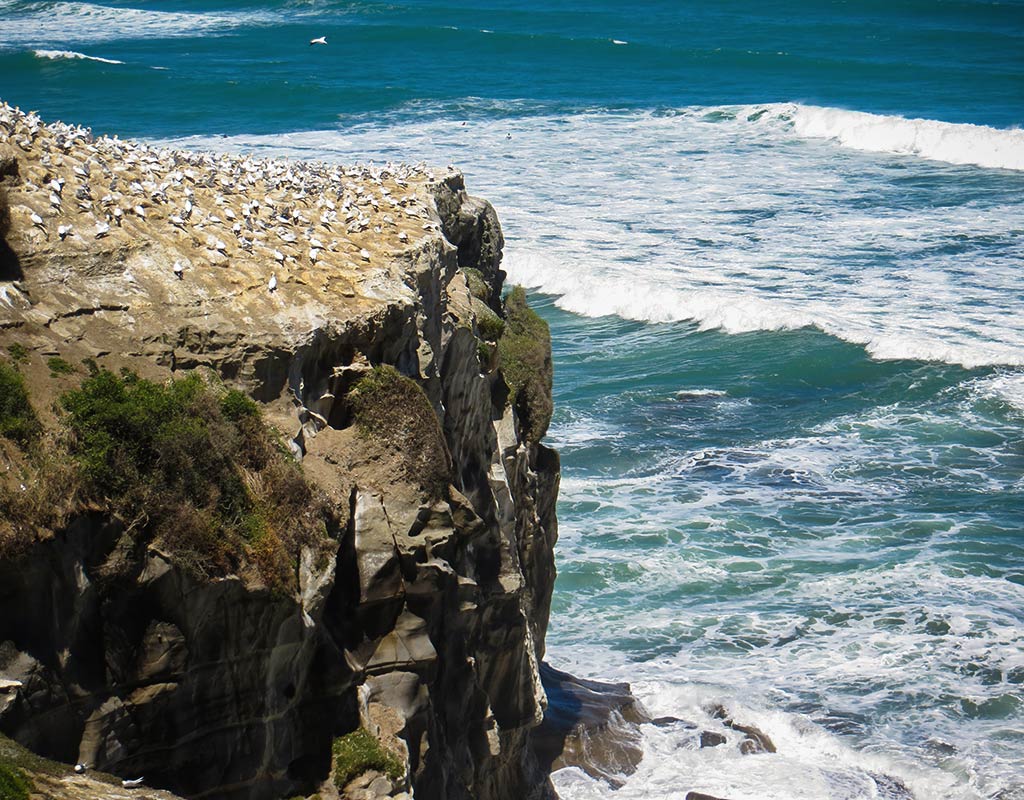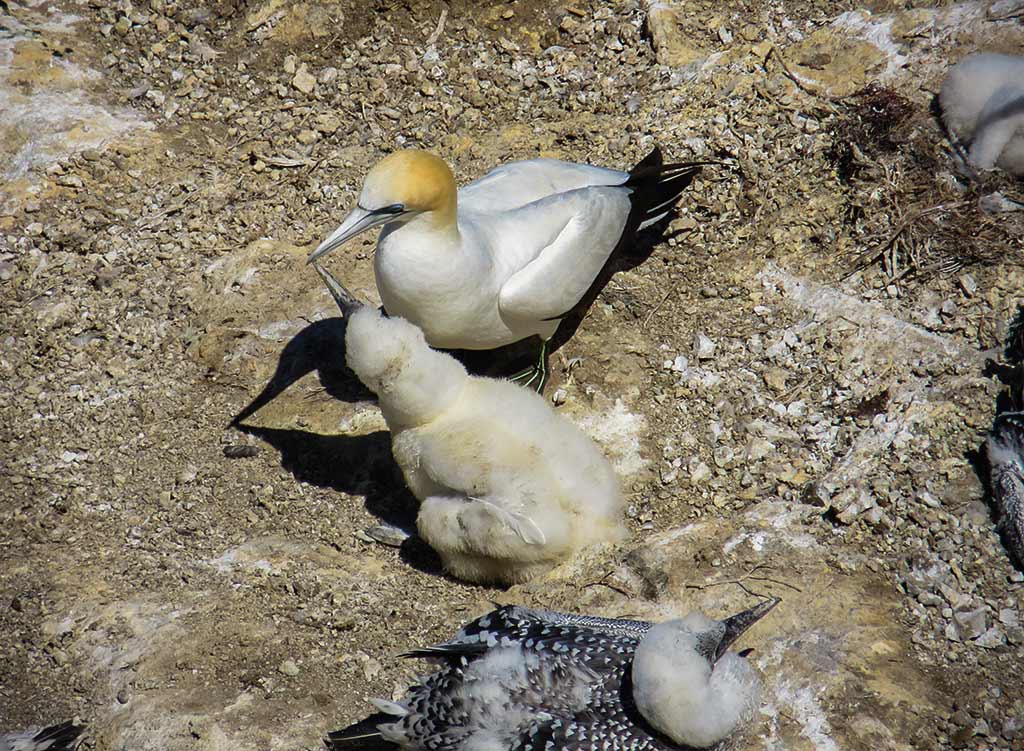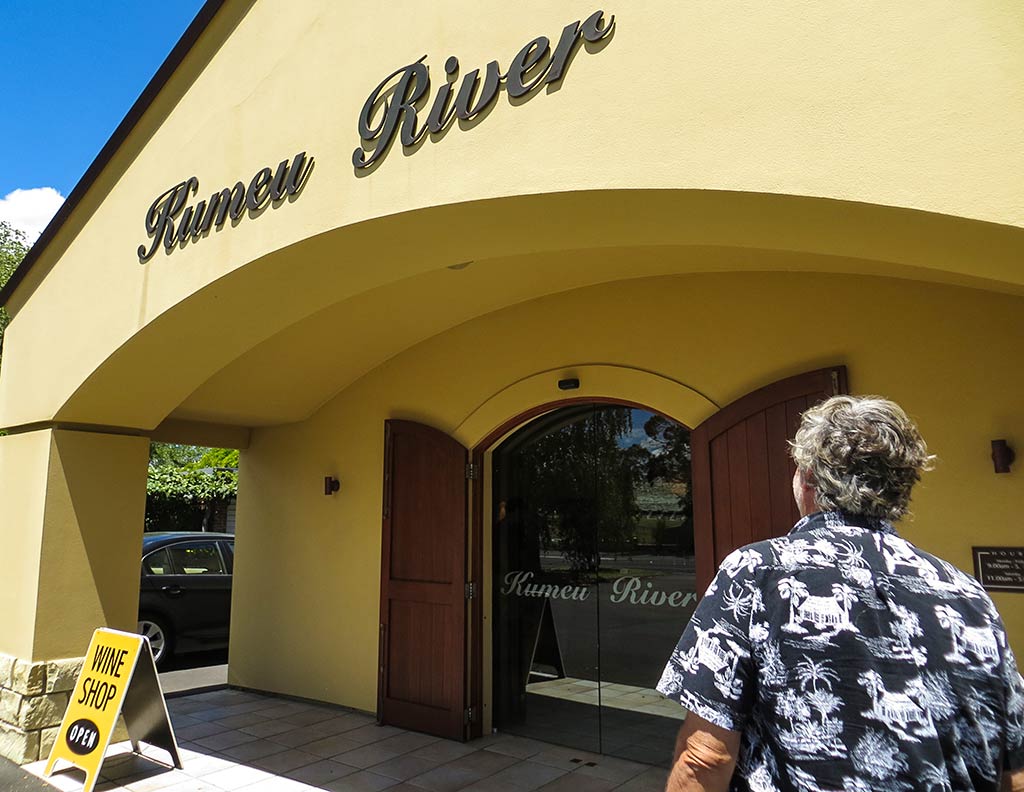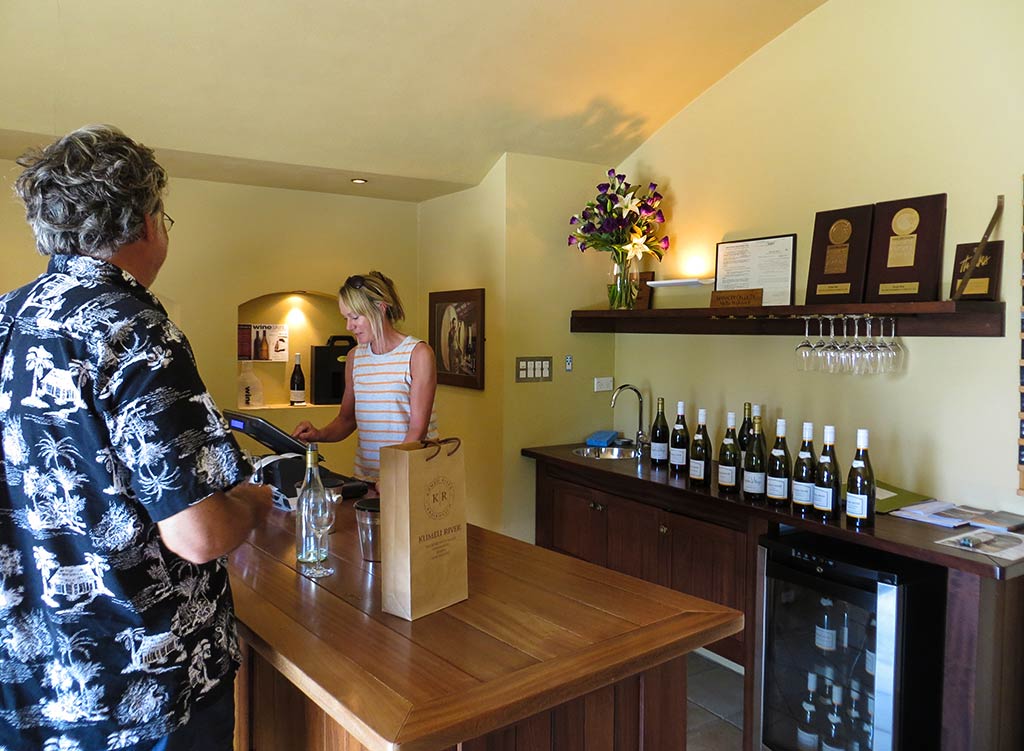February 1, 2014
Gannets are large seabirds that fly over the southern oceans, diving from impressive heights before crashing through the ocean’s surface in their hunt for fish. They’re closely related (as in pretty much the same) to what we in the northern hemisphere call boobies. They can eat an impressive amount of food and like to demonstrate this ability by pooping it all out onto yachts making ocean passages.
They spend much of their time at sea, but when it comes time to breed they return to the coastal colony of their birth. There are several such colonies in New Zealand, three of which are on the mainland (two on the north island, one on the south). One of the colonies is only a 30-minute drive from Auckland, and at this time of year the chicks had hatched. So off we went to see the Muriwai Gannet Colony.
(You may notice the ocean here looks wilder than our usual photos. This is because the Muriwai colony is on the west side of New Zealand with harsher weather conditions and a more exposed coastline than New Zealand’s east coast where we do all our cruising.)
When we got close to the area, the road split off with no obvious sign as to where the colony was. So of course we took the wrong road and ended up at Muriwai Beach. This turned out to be a happy accident in that we got to see this black sand beach up close. I usually think of black sand as being coarse, but this sand was soft, brownish when dry with lovely sparkles. When wet, it’s dark black and looks like mud, but the color didn’t seem to deter the multitude of beach-goers there. (Click to enlarge/scroll through photo galleries that follow.)
While the waves near shore were small, they were pretty impressive out near the headland as the water slammed into the rocks, creating dramatic plumes, splashes and runoff waterfalls over the flat tops of the lava rock. Not surprisingly, the area seemed to attract a lot of surfers. Below, some photos of the coastline from a higher viewpoint.
After the beach we got back in the car and managed to locate the gannet area. Two lookout decks were perched over the gannet colonies, the birds spread out on the clifftops and some large rock pillars just offshore. These areas were thick with gannets and their chicks, seeming to be only one chick per pair. One of the parent birds would stay with the chick while the mate would hunt for food, performing a song and dance greeting with its partner on return, then feeding the chick before flying off again. The noise was impressive!
The chicks were all ages, from small white floofs to sleek grayish teenage birds. At one stage, the chicks are still covered with white fuzzy fluff but their wing bones are long, making them look like they have monkey arms. Oh well, many preteen earth critters don’t look their best during those awkward in-between years.
We visited both platforms and were rewarded with great views of the birds and surrounding coastline. We were actually pretty close to many of the birds, but they didn’t seem bothered by all the people watching them. In all, this had been a tremendously worthwhile thing to do; something we’d definitely recommend to visitors.
Our route back to Auckland took us through wine country, and while combining a day of wine tasting with the gannet excursion would be too much, we did opt to visit one winery, the Kumeu River winery, famous for its top-end chardonnays. If you can only get to one winery, this seemed to be the one to do.
The winery was nice, and we enjoyed a free tasting which included nine wines. I was surprised not to care much for any of the chardonnays, but I did love the pinot gris and the gewurztraminer. In all, this was a great day. –Cyndi

